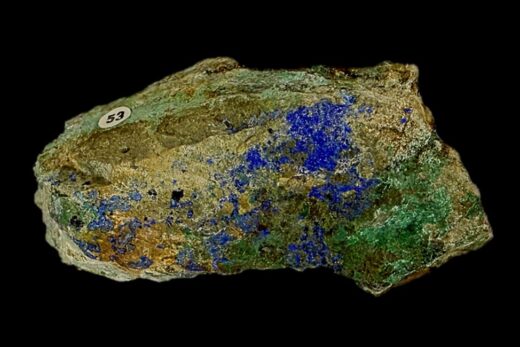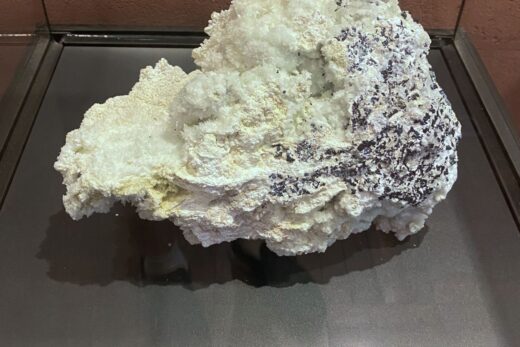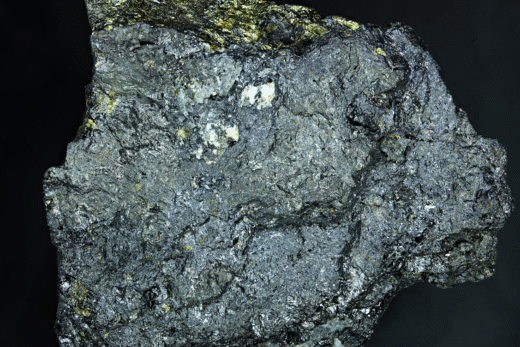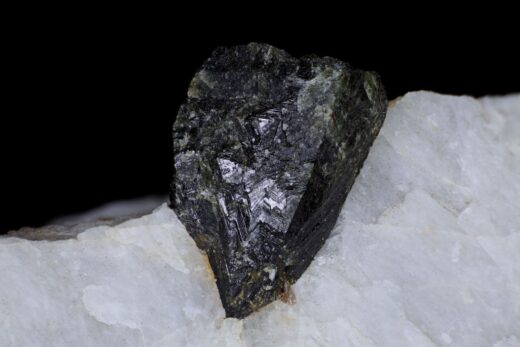Formula: Mn2+SiO3
From Alfredo Petrov:
PYROXMANGITE (pairokusumangan-koh; pairokusumangan-seki)
(Fairly widespread in japanese metamorphosed bedded Mn deposits, where it is often very low in Fe and much closer to end-member composition than other world pyroxmangites. Previously often mistaken for rhodonite.)
- Aichi: The world’s finest pyroxmangite crystals come from the Taguchi mine, where well-developed, lustrous gemmy ruby-red to rose-red or dark pink, with a purplish tint, complex terminated crystals to 2cm (commonly only 0.2 to 1 mm) occur in open fissures on massive pyroxmangite ore in banded Ryoke metamorphic belt gneiss derived from a metamorphosed Paleozoic bedded manganese deposit. Occasionally cut as gems. Exceptional crystals reach 5cm(!) (Geol. Survey spec., Tsukuba), but any over 2cm are very rare. Crystals are either thick tabular, dominated by the (100) face, or prismatic, elongated on the b-axis, without any strikingly dominant face. Major well-developed faces are (100), (010), (001), (101), (101), (110), (110), (102), (103), (112) and (012); also displaying (112), (120), (130), (203), and minor (012), (023), (013), (014), (014) and (111). Pyroxmangite is the main ore mineral in “siliceous carbonate” Mn ore here, associated with tephroite, rhodochrosite, alleghanyite, spessartine, pyrophanite, “manganophyllite” and hyalophane. Also as the major ore mineral in silicate Mn ore, associated with rhodonite, tephroite, spessartine, manganogrunerite, “manganophyllite” and quartz. Neotocite is another frequent associate. (Not significant in the Taguchi mine’s carbonate Mn ores.) Taguchi mine pyroxmangites have become classic specimens, widely distributed in collections. The dumps have been thoroughly worked over by collectors, and are now mostly overgrown, but zealous and foolhardy local collectors still collect pyroxmangite underground in a very dangerous rotting tunnel. Composition (as wt% oxide): Si 45.66, Mn” 42.46, Fe” 7.63, Mg 3.59, Ca 0.31, Fe”’ 0.29, Na 0.12, Al 0.09, Ti 0.05, P 0.01, water+ nil (H. Haramura analysis, 1957).
- Gifu: Euhedral or subhedral, bright rose-pink in small grains, purplish in larger masses, in metasedimentary Mn ore, partly replaced by later carbonate, at the Ajiro mine. Strikingly twinned, the cleavage continuous across the twinning plane. Contains 0.39% FeO, and larger but still minor Mg and Ca replacing Mn, being perhaps the most Mn-rich pyroxmangite analysed; empirical formula (Mn” 5.803, Mg 0.132, Ca 0.064, Fe” 0.042, Na+K 0.011) Si 5.976 O 18. In metasedimentary rhodochrosite-quartz-pyroxmangite ore hosted in grey meta-chert. Constitutes metasedimentary Mn ore, with minor patches of fine-grained carbonate, and cut by younger veinlets of quartz with carbonate, at the Nagashima mine. Also in very fine-grained carbonate ore, with bementite and hausmannite, cut by numerous late-stage veinlets of barite, carbonate, neotocite and bementite.
- Hokkaido: Pyroxmangite and manganoan cummingtonite, recrystallized by a granite intrusion, are the main ore minerals at the Tatehira mine. (The pyroxmangite contains minor FeO and CaO, with quite variable MnO and MgO.) With rhodochrosite and rhodonite as a minor gangue mineral in sphalerite-galena-pyrite ore in the Tajima vein of the Toyoha mine.
- Iwate: A pegmatite in Iwaizumi-machi was the 2nd locality in Japan for pyroxmangite.
- Kumamoto: Pyroxmangite, unusually rich in Mn, at the Ichinomata mine.
- Kyoto: The Ohro mine was the first locality in Japan for pyroxmangite, in a pegmatite. As massive, flesh pink bands in finely banded metasedimentary Mn ore, with hausmanite, tephroite and rhodochrosite at the Ashidani mine. Also found at the Kitchoh mine, the Sono mine, and the Tamaiwa mine.
- Shiga: Bright pink massive pyroxmangite occurs as 2cm patches in pale brown tephroite at the Kumanohata mine, associated with darker brown caryopilite.
- Tochigi: Deep pinkish red subhedral crystals and cleavages up to 30cm(!) across, with interstitial masses of protomanganoferroanthophyllite, in one Mn-rich bed (now worked out) in an active chert quarry on Yokone-yama. Rare exceptional gemmy facetted stones over 3cm across are known from a fabulous find in 2004. Also at the Kaso mine.
- Yamaguchi: Twinned pyroxmangite was an important ore mineral at the Renge mine, where it was intergrown with quartz, carbonate and stringers of garnet, with accessory pyrophanite, pyrrhotite, huebnerite and galaxite, in potato-shaped pods up to 4m long in Paleozoic metachert. Purplish pink pyroxmangite at the Kinkou mine is unusually rich in Mn and also is unusual in containing a little Zn (0.23 wt% ZnO); empirical formula (Mn” 4.877, Mg 0.724, Fe” 0.135, Ca 0.092, Al 0.055, Fe”’ 0.027, Zn 0.021) Si 6.013 O 18. Also at the Kusugi mine and the Takamori mine.
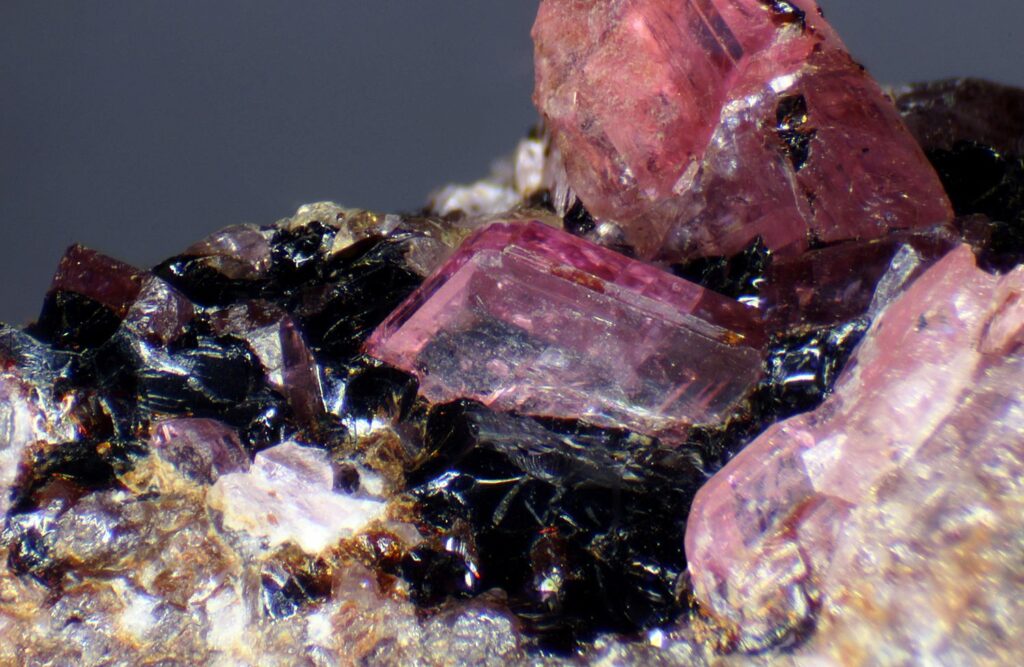
Above: Pyroxmangite, Taguchi mine, Shitara, Kitashitara County, Aichi Prefecture, Japan. Width of view 5mm.
